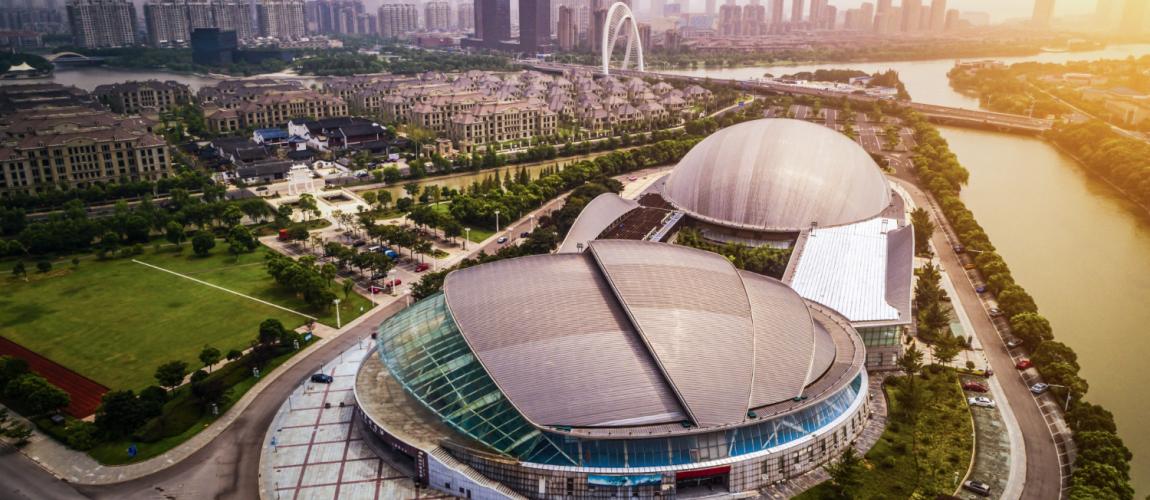Sports Hub, Singapore

Photo Credit: Image by Freepik
On this page: A case study on Sports Hub, Singapore. Find more at the Municipal Public-Private Partnership Framework - Project Summaries section for brief summaries of around 100 projects from around the world, examples of successes and challenges, as well as innovative ideas on solutions, or visit the Guidelines on Innovative Revenues for Infrastructure section.
Project Summary: Background Following the closure of the old Singapore National Stadium in 2007, the Singapore government needed a replacement venue to host national events and major concerts. The city-state wanted the site to not only meet existing needs, but also to serve as a regional sports hub for Southeast Asia, attracting major events to the country. Project Structure The project was awarded under a concession arrangement between Sport Singapore, the government’s sports statutory board, and Sports Hub Pte Ltd. (SHPL), a consortium consisting of InfraRed Capital Partners, the majority equity partner, Global Spectrum Pico, Dragages Singapore, and DTZ Facilities and Engineering. Under the agreement, SHPL would bear the initial construction cost of the project, with Sport Singapore making monthly payments over the 25-year term that would total an annual payment of SGD 193.7 million. After the ground-breaking was delayed by the financial crisis in 2008, the 35-hectare ‘Sports Hub’ was completed in 2014 at cost of SGD 1.33 billion (USD 990 million). It consisted of an 80-meter high National Stadium along with an adjoining mall called the Kallang Wave. The deal benefited both parties in that the Singapore government was able to avoid the large, upfront capital expenditure, while SHPL avoided any cash-flow volatility over the contract term due to the periodic payments from SHPL. The agreement also provided protections for commercial viability, as the stadium was without an anchoring sports franchise to host home games regularly. SHPL would receive payments as long the venue was available and satisfied performance metrics defined in the contract. All commercial profits from the stadium’s operations would be split between SHPL and the government, which gave both parties an incentive to support the development, promotion and operation of the site and adjacent outlets. Lessons Learned After completion, the Sports Hub stumbled in its first set of high-profile ventures. A 2014 friendly football exhibition between Japan and Brazil was hampered by the condition of the sandy field. Later that same year, a major concert was disrupted by a leaky roof that led Sport Singapore to publicly criticize SHPL’s work. The Singapore government threatened to withhold payments, citing deficiencies in the field surface as not meeting key performance standards. This led the consortia spend SGD 1.5 million on lamps to replicate the effects of sunlight to help grass grow. However, this work led to events being cancelled and tickets refunded, which further exacerbated public displeasure with the project. Upon resolving the initial technical problems, SHPL encountered still more problems when it was accused of being too expensive for many local sports organizers and community event operators, with even some global promoters suggesting that leasing charges for the stadium were not affordable. SHPL also clashed with the Singapore government over extra rehearsals for the National Day Parade and stadium rental. The pricing structure led to a shortage of events staged at the site. Executive suite owners who had paid SGD 180 thousand/year were unhappy with the programming schedule and demanded refunds or refused to pay membership fees. Internally, SHPL saw a number of senior staff resignations. In a recent audit by KPMG, the firm found that there was misalignment of interests among the different stakeholders for the Sports Hub. SHPL wanted to prioritize commercial shows and sporting events for the venue. In contrast, Sport Singapore preferred hosting more community programming at the site. While most of the major difficulties concerning technical issues and pricing have been resolved, the larger disagreement between the two stakeholders still remains, as there are over twenty years remaining on the concession contract. This provides a good example of how a PPP can be structured to allow the public entity to avoid the initial, large capital expenditure for a project by deferring and spreading this cost out over a number of years in the form of regular payments to a private partner. However, it also shows the importance of ensuring that the parties’ incentives align. The private partner will nearly always prioritize profits, while the public partner may prefer less profitable pursuits that generate other, non-monetary benefits. Where this is the case, the public partner should have a plan in place to mitigate the opportunity cost attendant to its preferred use of the asset or there is likely to be friction between the two partners.1 Footnote 1: Source: https://cmp. smu.edu.sg/article/ public-privatepartnerships- casestudy- singaporesnational- stadium Accessed on June 14 2019
The Guidelines on Innovative Revenues for Infrastructure (IRI) is intended to be a living document and will be reviewed at regular intervals. They have not been prepared with any specific transaction in mind and are meant to serve only as general guidance. It is therefore critical that the Guidelines be reviewed and adapted for specific transactions.
To find more, visit the Innovative Revenues for Infrastructure section and the Content Outline, or Download the Full Report. For feedback on the content of this section of the website or suggestions for links or materials that could be included, please contact the Public-Private Partnership Resource Center at ppp@worldbank.org.
Updated:
TABLE OF CONTENTS
I. Innovative Revenues for Infrastructure (IRI)
2. Introduction to Commercial Value Capture (CVC)
3. Applying CVC in Infrastructure Projects
2. Case Studies in CVC from International Experiences
Related Content
Select WBG PPP Toolkits
Featured Section Links
Additional Resources
Climate-Smart PPPs
Type of ResourceFinance Structures for PPP
Type of ResourceFinancing and Risk Mitigation
Type of Resource